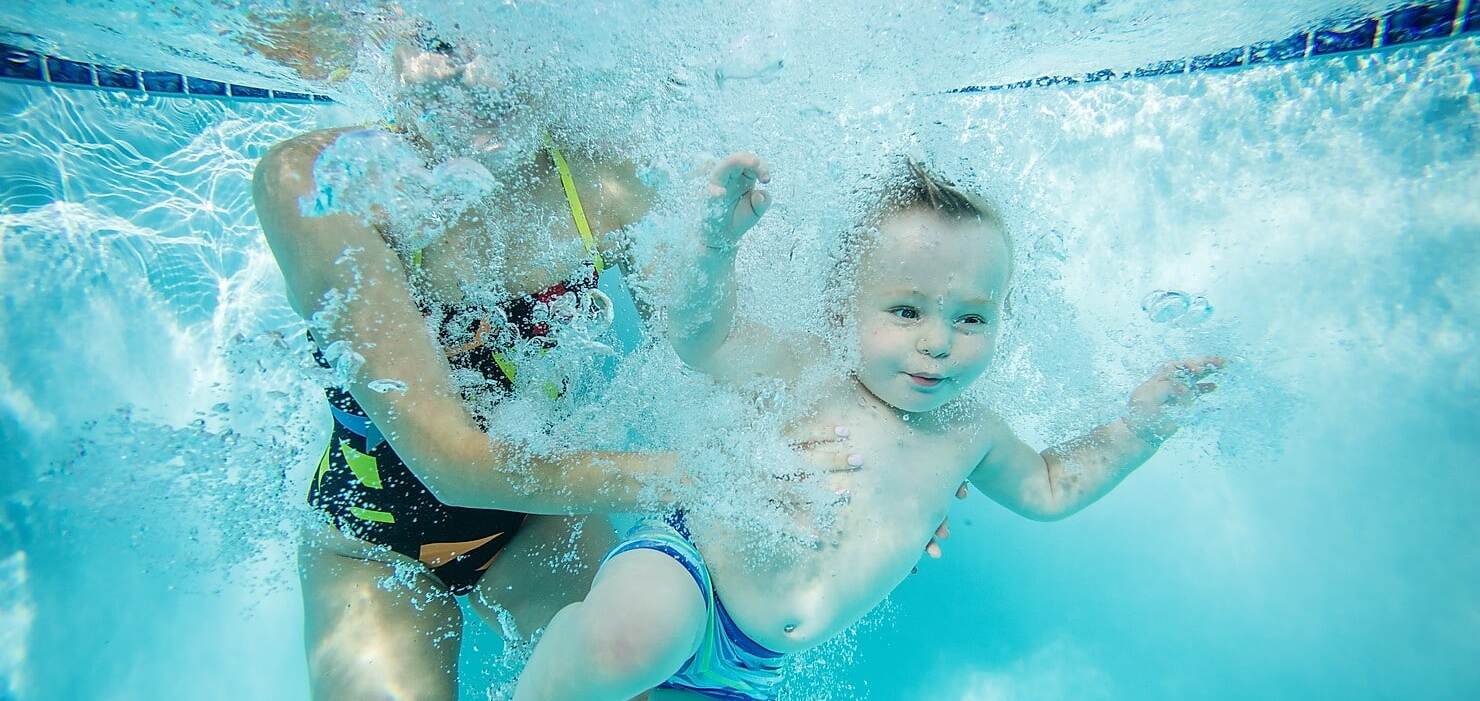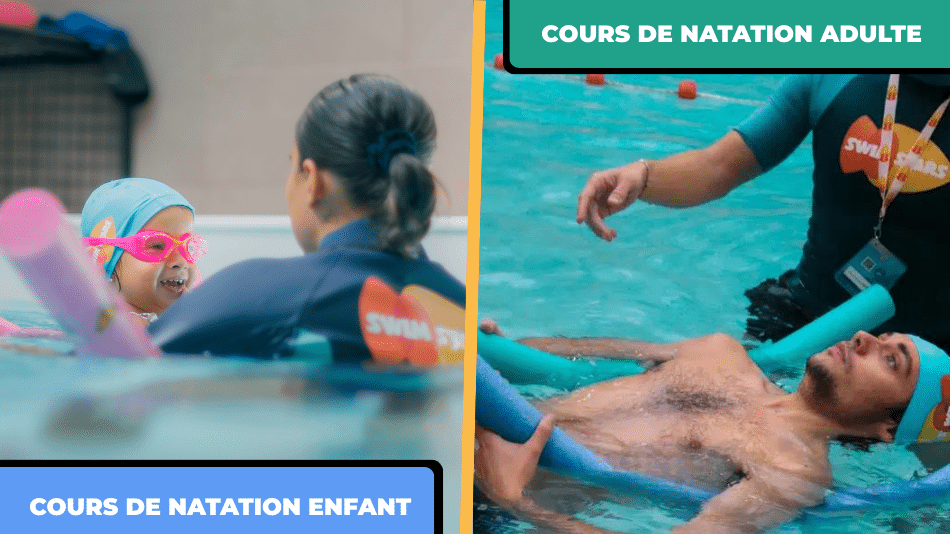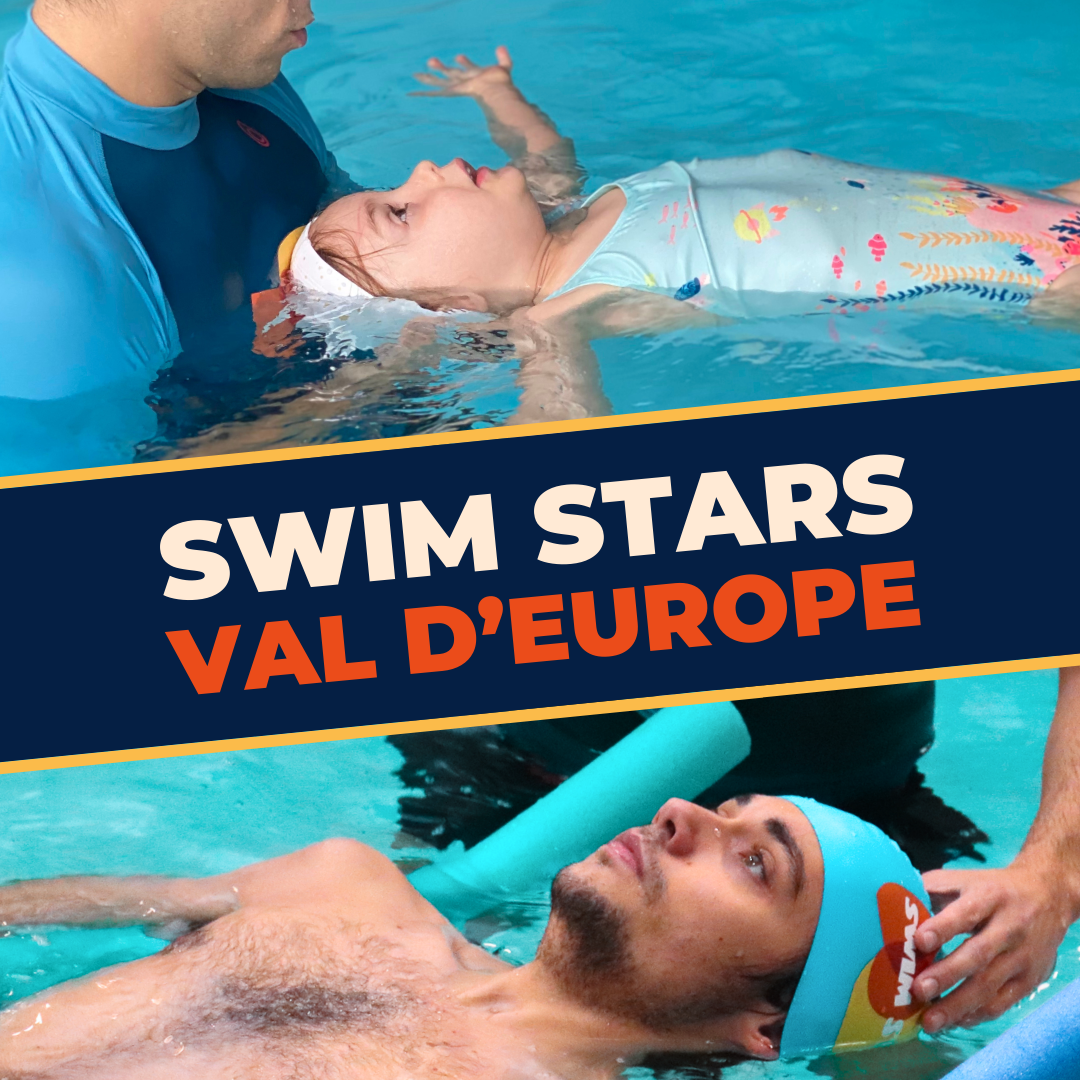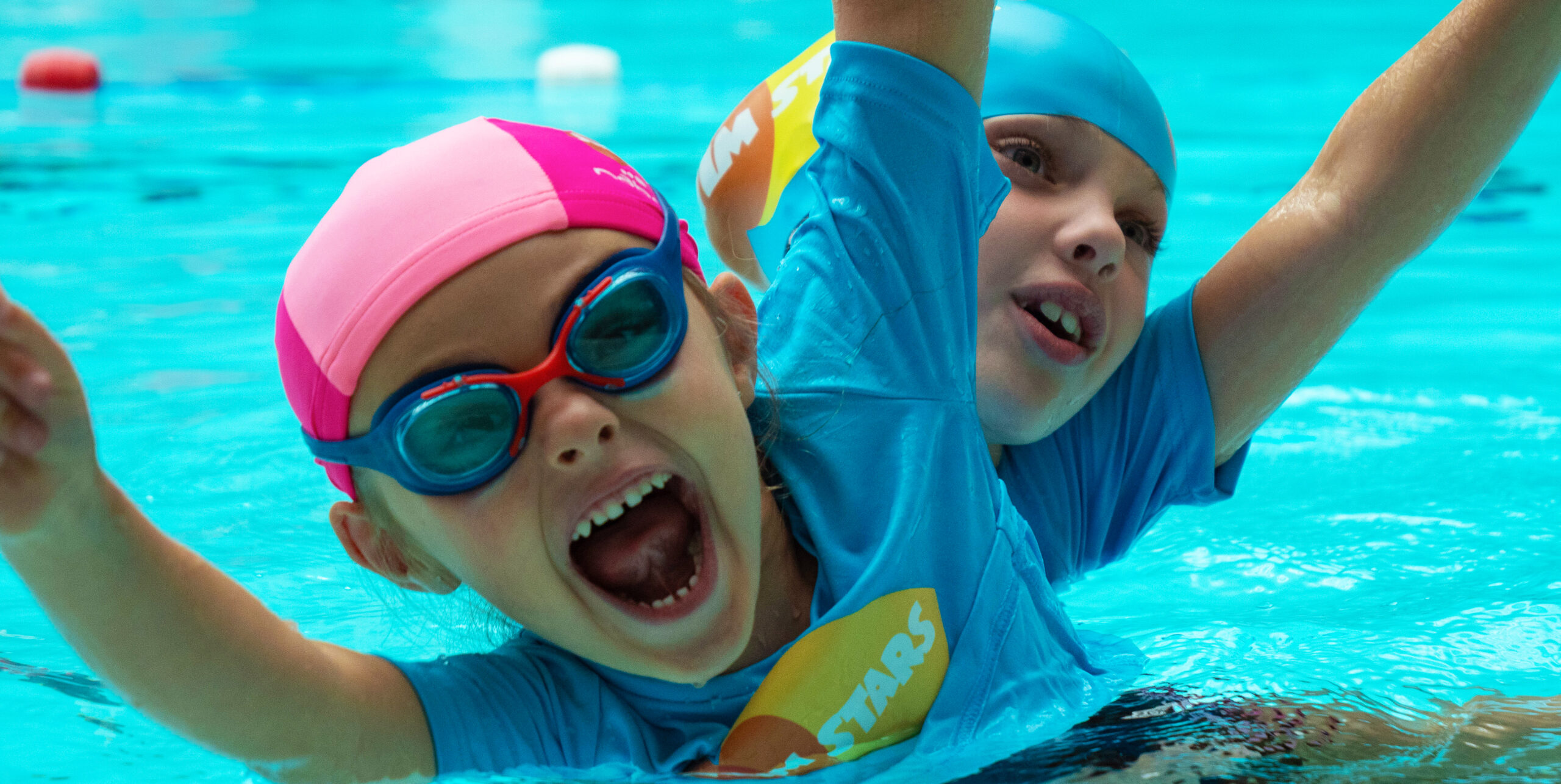Swimming with your baby, a unique experience
Now you’re ready to swim with your baby and you probably have a lot of questions.
How to hold baby? What position should your baby be in?
Even if you are registered for baby club sessions, you will learn a lot about baby swimming.
Our 4 tips for swimming with your baby
Keep eye contact for swimming with baby
This is a new experience for your baby, so you need to make sure he or she is calm in order to build trust. Eye contact engages communication and learning skills. Swimming with your baby strengthens the parent/child bond and teaches your baby to understand communication – engaging listening and conversation skills.
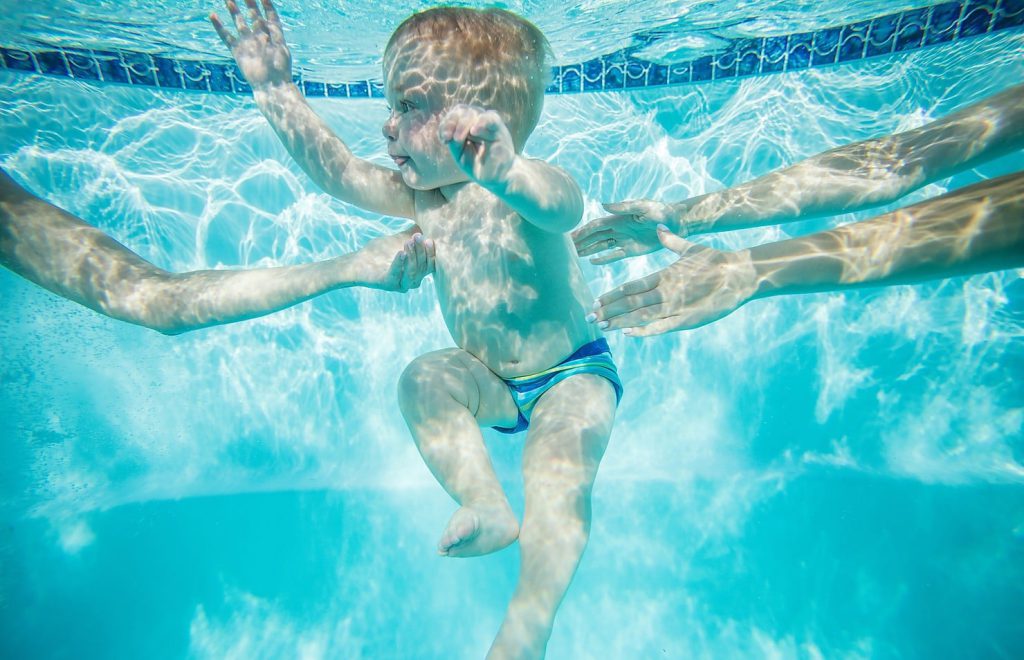
Hold your child close to you
Like eye contact, skin-to-skin contact is a critical component of newborn health and development. It is also an important factor in keeping them calm, comfortable and feeling secure. Skin-to-skin contact builds trust. Research shows that a soft, nurturing skin-to-skin embrace offers several benefits to the baby, especially when this contact is made by the mother. The positive effects go both ways, offering parents positive physiological and psychological effects due to the physical contact with their newborn. Strengthening this bond reinforces the baby’s belief that mom and dad will be there for him. Love and skin-to-skin contact have been shown to increase a child’s social skills.
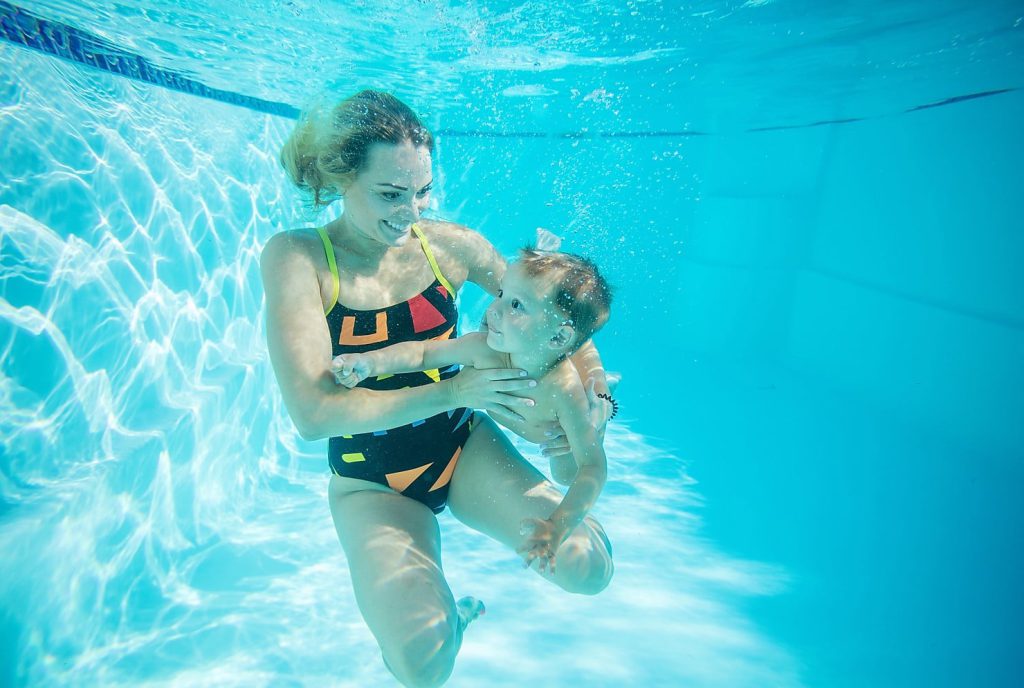
Float on your back (starfish)
One of the first positions to teach your baby is the back float (starfish). This is usually the most comfortable position for a baby to be in while in the water. However, if your baby really doesn’t like this position, simply hold him upright (arms outstretched in front of you, hands under armpits, shoulders in the water and baby facing you, keeping his face 20 to 40 cm away so he can see you) until your baby builds up enough confidence in the water to try again. The starfish is a relaxing position that allows your baby to feel the sensation of floating away from the womb.
If you have already practiced this position in a bathtub for example before going to the pool, it should be easier and more comfortable for baby. To begin, place your baby on his or her back so that the pool feels like a familiar environment. Make sure your baby’s head is lightly supported (touching without lifting) by your hand. It’s important that your baby feels safe, so cradle his body close to you so he can see you. Talk to your baby all the time to reassure him.
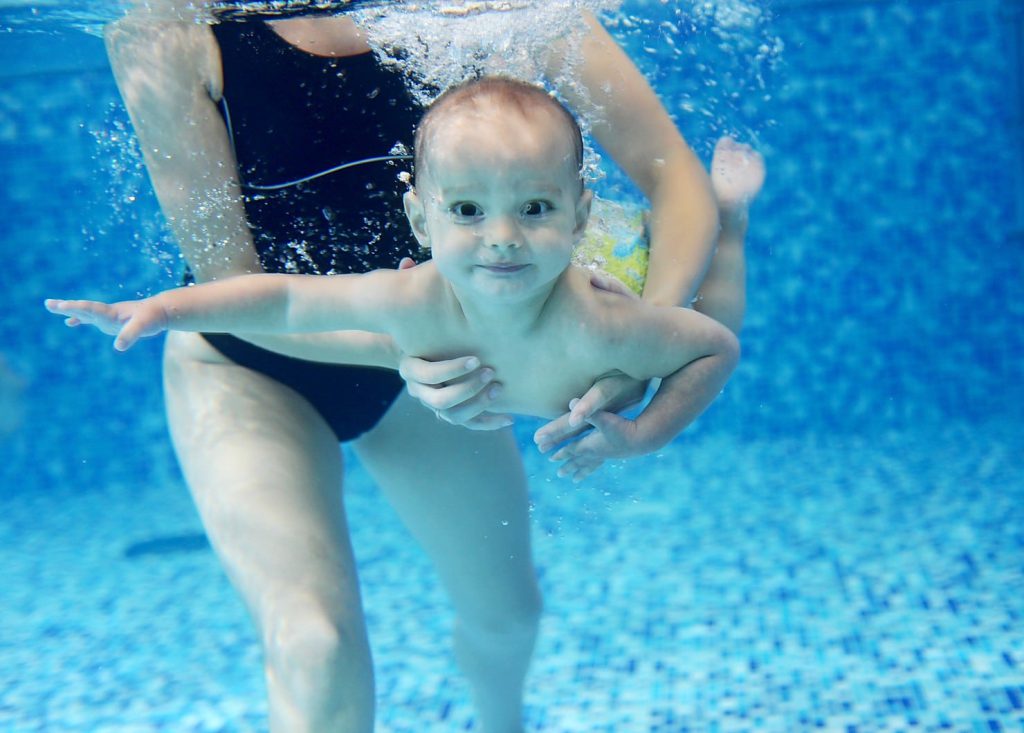
When swimming with your baby, have fun!
The laughter, excitement, singing and games all contribute to the overall experience around the water activity. You want your baby to have a good time and a positive connection to water. Nursery rhymes are a great way to calm your baby, to soothe him with your voice. Music also plays a role in a child’s development and facilitates learning. Having colorful toys to play with will also make their time in the water more enjoyable!
For Nathalie Barenghi, journalist of the online magazine Aufeminin,
happiness is in the pool!
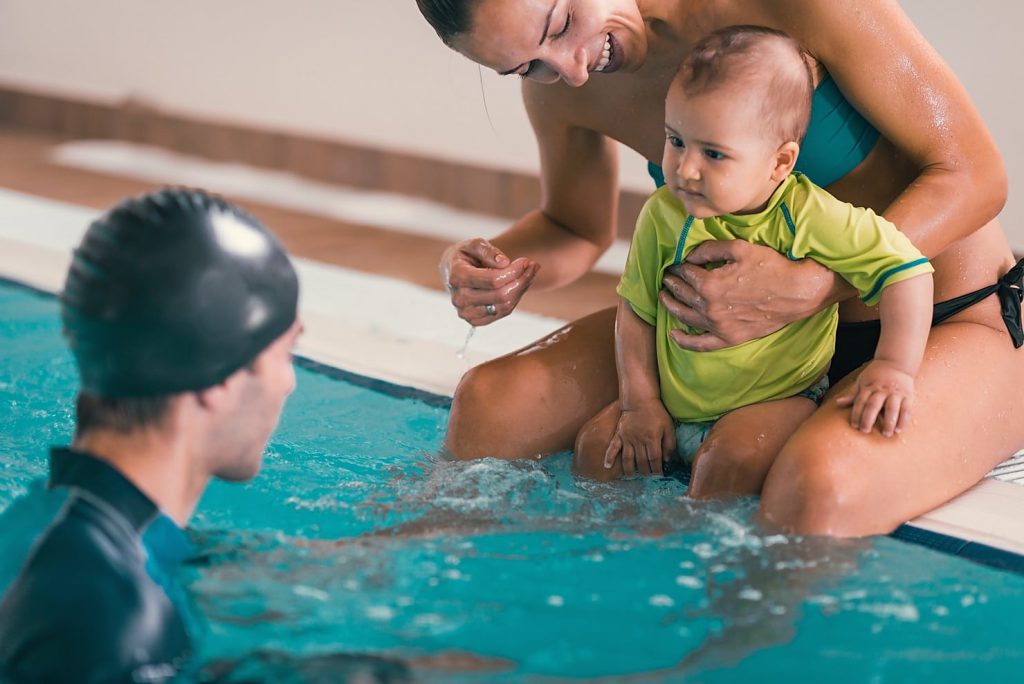
To prepare for your class, please remember to bring a baby diaper , a swimsuit and a hat for mom or dad, towels and of course flip-flops.
